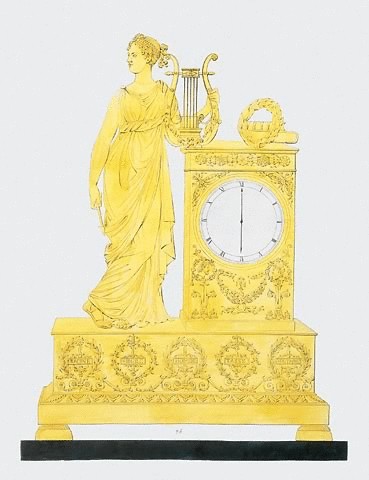Description
The Muse resting a lyre beside books and a laurel wreath on an altar containing the clock, the plinth with a literary canon of names both Ancient and "modern" Italian and French, from left to right: Racine, Virgil, Homer, Tasso and Voltaire 20in. high
The god Apollo was attended by nine Muses, goddesses of creative inspiration in the performing arts, including poetry, song, music and dance. In time, each Muse assumed a distinct sphere of influence. Erato, the Muse of lyric and love poetry, had the lyre and book amongst her attributes. The explanation of the allegory intended here is perhaps provided by the sentiment engraved on a Louis XVI clock of circa 1780, with a similar series of literary names: LE GENIE IMMORTEL SURVIT - TOUS LES AGES / ET DU TEMS [sic.], SANS EFFROY, CONTEMPLE LES RAVAGES (Immortal genius survives for all time; and regards the ravages of Time without consternation), illustrated in Nieheser, 44.
Two clocks related to the present design with the same books and laurel crown on the altar, but with a figure of Apollo holding the lyre, are in the Spanish royal collection, illustrated in Carvajal, 365, #134 at 15in. high & 365, #358 at 19in. high. Both clocks are signed Blanc Fils, Palais Royal. A closely related composition (the Muse's lyre now lacking), the frieze with a bust of Homer, is in the same collection, along with another with a figure of Minerva; see Carvajal, 334, #323 & 344, #333. Related figures of Muses are featured on other clocks in the Spanish royal collection; see Carvajal, 169, #147 & 271, #256. A different related clock, the Muse with her arm akimbo, in the Mobilier National, France, is illustrated by Dumonthier, pl. 49.
Medium
Watercolour, gouache and pen and ink, on laid paper
Dimensions:
50.40cm wide 67.40cm high (19.84 inches wide 26.54 inches high)
Status
FOR SALE





